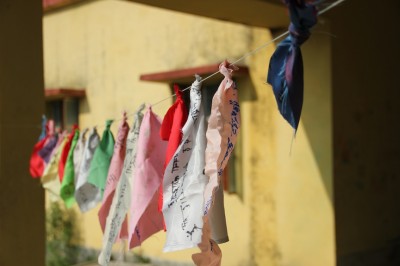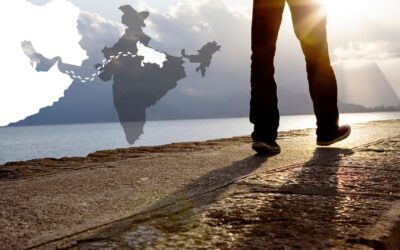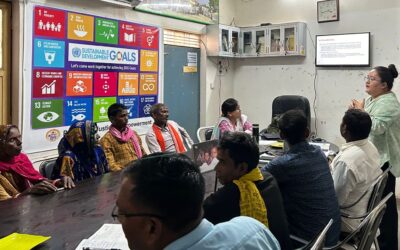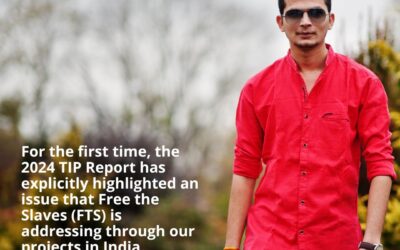Editor’s note: This is the fourth part in a series of blog posts written by longtime Free the Slaves supporter Carol Metzker. Carol has been writing about her visit to Punarnawa ashram in India, where girls who have survived slavery heal and rehabilitate. (You can read her earlier articles here, here and here.)
What is it like to talk to a child who has been robbed of her rights, her freedom, her dignity and her childhood?
At Punarnawa Ashram, a better question to ask is: What is it like to interact with a girl who has a second chance in the world, a new set of educational and vocational skills, a fresh dose of hope and the means to pursue a life of happiness? Because of Free the Slaves, its compassionate workers and generous donors, girls are regaining their rightful place and power in the world.
On the last day of my November 2011 visit to this special rehabilitation center for young females who have survived slavery and sexual exploitation, I pulled fabric scraps and twine from by luggage. On a rectangle of pale blue satin, I wrote my deepest wish for the ashram: serenity to the souls who walk its grounds and the soles that touch its earth. Then I tied it to the twine that I had strung from a dorm’s porch column to a window frame. One by one, the girls, visitors and staff members chose cloth, added their hopes and hung them on the line.
 The girls told us the dreams written in Hindi and English on their banners: “To be a doctor,” and “To be with my mom and dad soon.” A pink banner said simply, “I love you God.” Another girl whose native northern Indian language was different from that of the others drew a flower on a scrap of yellow silk. The wishes hung like Nepalese prayer flags—pink, lavender, red, lime green, yellow, silver and blue—above their garden of marigolds and in the dazzling sunshine.
The girls told us the dreams written in Hindi and English on their banners: “To be a doctor,” and “To be with my mom and dad soon.” A pink banner said simply, “I love you God.” Another girl whose native northern Indian language was different from that of the others drew a flower on a scrap of yellow silk. The wishes hung like Nepalese prayer flags—pink, lavender, red, lime green, yellow, silver and blue—above their garden of marigolds and in the dazzling sunshine.
Because of Free the Slaves and donors, these girls have the ability to dream dreams, the voice to speak them, and the skills to pursue them. Isn’t this what liberty is all about?



